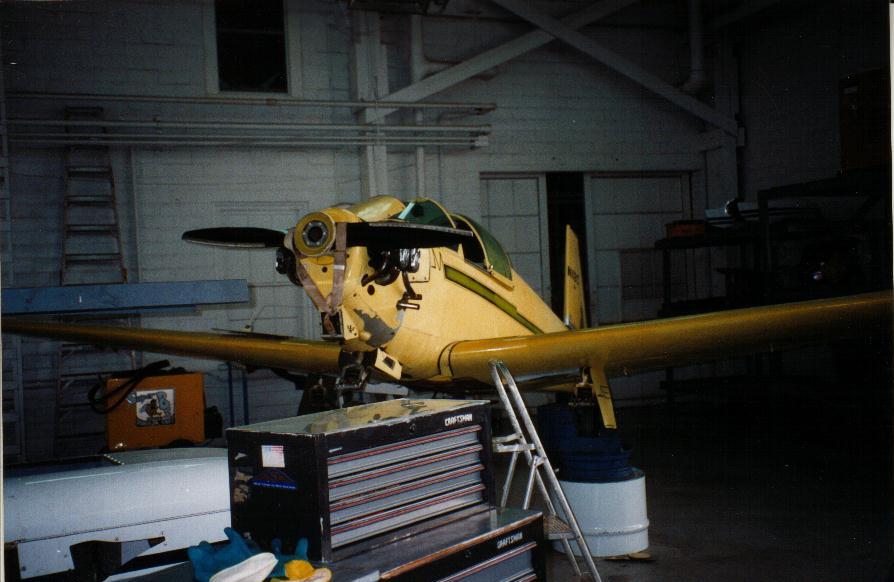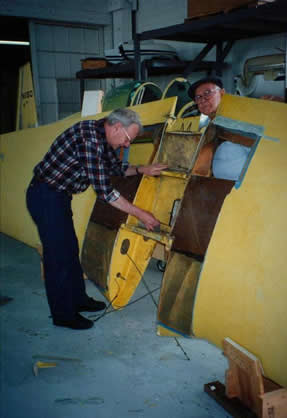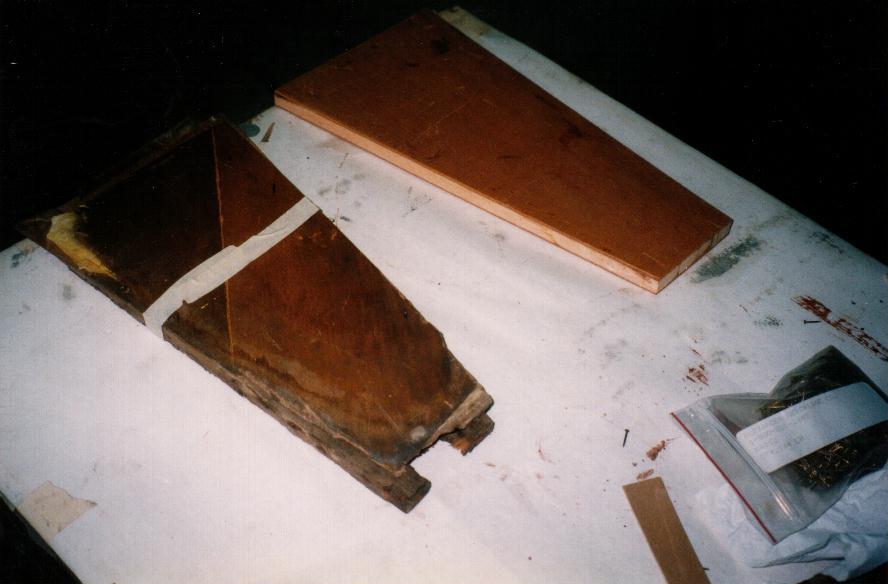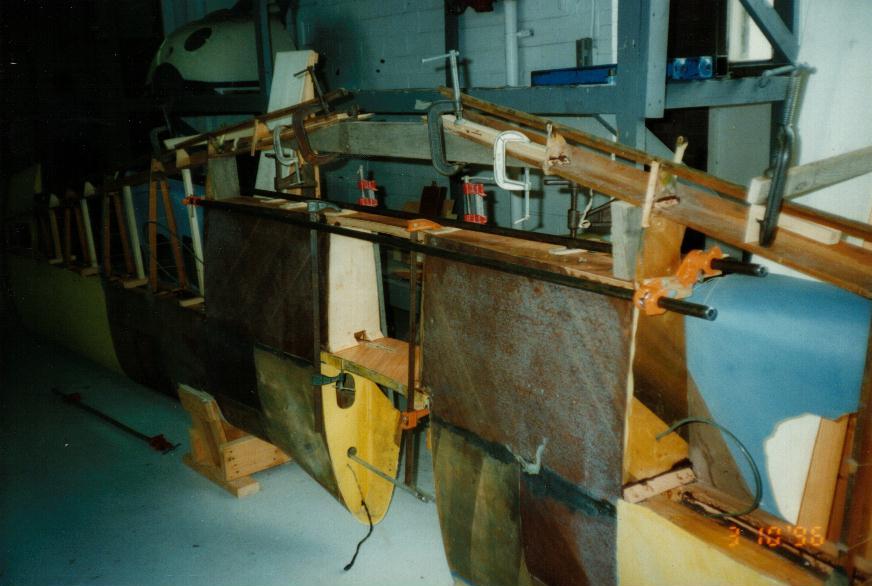The aircraft as found by Dick Rank in Ben Epps' hangar at PDK in 1996
The wing assembly after being removed. That's Dick Rank on the left, with Ben Epps Jr. "lurking" at the back.
Vertical stabilizers, showing old vs. new.
Wing assembly undergoing change.
N118C with new paint, ready to return to the air!
Dr. Robert Schroeder of Minneapolis documents for us the history and second rejuvenation of his Mite. This is probably a typical life story for a fifty-year-old airplane. Luckily, after all this, N118C has found a good home and the TLC that it deserves.
-
M-18L, N118C, Serial number 79 was purchased by Enterprise Sales from Mooney Aircraft, Inc. on October 4, 1950.
-
Purchased by Jack Whitly on September 28, 1957 in Wichita, KS.
-
Purchased by Thomas Fitzgerald of Greeley, CO on August 28, 1965.
-
Purchased by W.L. Kidd (DBA N.W. Mooney) of Great Falls, MT in 1966.
-
Purchased from Kidd by Lawrence Johnson of Corvallis, MT on April 5, 1971.
-
Purchased by Michael Miller of Wieser, ID on July 6, 1973.
-
Purchased by Tony Terrigno of Buena Park, CA on March 30, 1977. Tony rebuilt the aircraft and won at Oshkosh in 1980: Classic Award for Outstanding in Type - Limited Production. At that time it had about 900 hours on it.
-
Purchased at Oshkosh by Marshall H. Haas of Atlanta, GA and registered on May 29, 1981. Haas owned it until 1994 when he went into bankruptcy. While in Atlanta is was flown very little, estimated at less than 30 hours. It was held as security for unpaid bills at the Beechcraft at DeKalb-Peachtree Airport (PDK) in Atlanta. The logs were lost.
-
Purchased by Ben Epps Jr. of Atlanta, GA in 1996 who rescued it from being destroyed by weather and neglect.
-
Purchased by Dick Rank in 1996, who rebuilt it between July 1996 and May, 1997. It then went to its home in Minneapolis. It was shown at Oshkosh in July 1997.
-
Purchased by Robert Schroeder in August of 1997.
Dick Rank was visiting the aviation shop of Ben Epps Sr., widely known for aircraft construction and renovation in Atlanta, when he noticed a small, faded yellow aircraft, a 1950 Mooney Mite. Over a cup of coffee, Dick learned its history, and how Ben was storing and planning to sell it. From talking to Ben, he knew exactly what needed to be done. By next morning he was the intrepid owner, intending to rebuild it under Ben's guidance.
The job was begun in July, 1996. There were no particular surprises when the fabric was stripped off, revealing the wooden structure so cleverly engineered and assembled by the Mooney Brothers 45 years earlier. The main spar looked good, but the shorter rear spar would have to be replaced. It and several other small pieces were badly rotted from moisture. Working with a hand made steel jig and choice pieces of knot free Sitka spruce, in a few days they had an exact replica of the rear spar ready. Glued in four stages and faced with aircraft-grade mahogany, it was a thing of beauty, a perfect replica of the original, but much stronger. That was the end of stage one.
For stage two, Dick went back to Atlanta to work six months straight on his Mite project. More restoration of wing components was required than originally expected. Much of the 1950 glue had turned brittle and crumbly. Over 100 gusset pieces needed replacement. In the face of all this work, he was able to avoid discouragement by looking ahead only two or three days at a time.
With painstaking detail, they replaced or repaired plywood webs and butt ribs in the wing using resorcinol or T-88, depending on the location and the fit of each joint. Seeing the one-piece wing take shape was very satisfying, knowing it would be as good or better than the original. The fabric was on the wing by January. Dick observed that covering the aircraft with fabric is surprisingly fun and rewarding. It's the one time when you can really see the results of your effort.
There was more work to be done yet. The landing gear were bead-blasted and painted. They found a cracked stabilizer spar, but were able to find a replacement quickly. Masking and painting were tricky. Rigging and balancing were necessary of course, as was compliance with all AD's.




